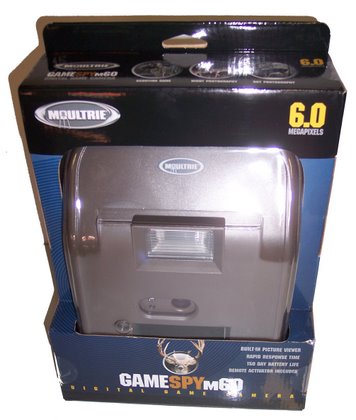
Ok, so you have decided to get a digital game camera to scout deer in your area. There are lots of camera options, so here we go. A big factor to consider in determining which trail camera to buy is battery type/requirements. It’s seems obvious, but choose a camera that works with rechargeable batteries.
Rechargeable batteries will save you a bundle of of cash in the long run and you can use that money to buy another game camera. I know folks who keep their cameras out for months at a time by simply rotating 2 sets of rechargeable batteries and swapping memory cards. Many cameras also have ports for the attachment of solar charger. This is even easier!
Next, let’s talk about image capabilities. As far as picture options, you’ve got infrared (IR) or color photos. Both have their advantages and disadvantages. IR cameras are usually priced higher than color cameras and IR pictures will not be as detailed as the full color photos. However, the IR models have the advantage of not needing a flash, which some hunters fear may spook deer and cause them to avoid the area where the camera is placed out. I have not seen any evidence showing that flash impacts deer. Of course, if you go with IR technology it’s not even a consideration.
The resolution of a camera, expressed in megapixels, is another consideration. The first digital cameras produced were available in the 1.2 megapixel range. This will give you a good idea of deer visiting your area, but picture quality is low. You can still buy these cameras, but now you have the choice of purchasing a camera equipped with up to 6 or more megapixel capability. In my opinion, anything over 3.0 will easily meet the needs of most hunters.
The higher the megapixels, the better the quality of the picture. You may not see the need to purchase a high megapixel camera. However, one advantage of the higher megapixel camera is that it gives you the ability to zoom in on small sections of the photograph without the image becoming pixilated and distorted. It allows you to zoom in on deer in the background and identify what’s going on back there. It is also easier to distinguish one buck from another.
It may seem a bit ridiculous that one digital trail camera costs $90 while another may cost as much as $800, but many have learned the hard way that you do get what you pay for. The reliability of the camera and sensitivity of the sensor improves with price. You will have to let your budget and needs dictate which camera you choose.
With all of this in mind, make sure you choose the camera is right for you.
Never buy a Cuddeback camera… I have owned 3 and I only have one that is still operable, and that is because it is brand new and has only been used for about 2 weeks. The first one was an Excite which didn’t work from the very first day I used it. Oh, it would take a picture, the only problem is that it was black and green lines and nothing else. Also after 3 weeks of emailing, calling and pulling my hair out they finally fixed it and sent it back, and I sold it right away.
I had also bought a Cuddeback Capture, which was used last winter for about 3 weeks, and then this summer for about 5 weeks total. The rest of the time was spent in it’s original package on the wall which amounted to a total combined time of 6 months before it screwed up. And of course Cuddeback won’t fix it now. My recommendation, Buy a Bushnell Trophy cam or anything besides a Cuddeback.